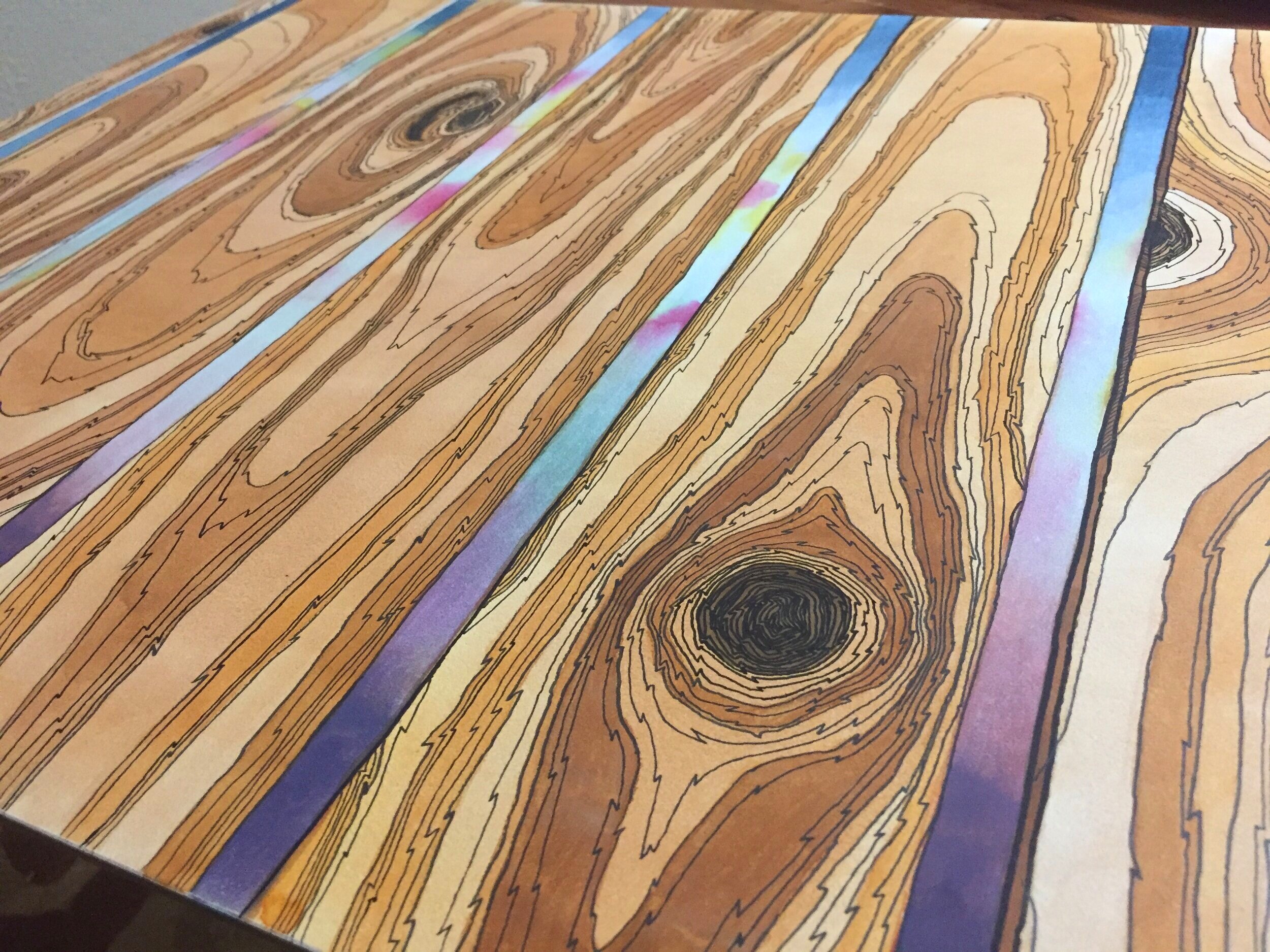
Artwork
As a scientist who first went to art school I’m continually trying to capture the things I see in my research on the canvas. In 2018 I was delighted to have my first solo exhibit, “Foundations”, displaying the paintings I’ve made which attempt to explain scientific concepts through artistic media. Below are several of these pieces as well as other fun projects I’ve done.
In addition, I’m always happy to help out other researchers communicate their findings in model figures, graphic abstracts, and other visual displays. See the section entitled “science figure illustrations” below for this work. If you need help, send me an email and we’ll get started!
Neuro-Oils.
In 2018, I decided to try oil as a medium for the first time since elementary school. I wanted to convey how everything we experience is only possible through the coordinated and concerted effort of our neurons. How can these cells function so quickly and so precisely again and again? There is so much we don't know, but the brain I have is allowing me to research and learn more about it. These paintings are in appreciation of the cells working behind the scenes to give me my life of exploration. Here, I’ve represented several places I’ve explored outside the lab. Temple Mountain stands out in the San Rafael Swell in southern Utah where I’ve enjoyed hiking. Frary Peak trail leads me to the views overlooking Antelope Island and the Great Salt Lake. And I’ll always remember writing my candidacy exam abstracts because they were due just after I attended a wedding in southern Florida. The wedding was held near the banks of an estuary completely covered in oyster beds. Writing on the dock overlooking the water as this incredible sunset was happening is a memory I hope I'll always retain.
Neuroscience Watercolors.
Neurons are brain cells and they come in a wide variety of shapes and sizes. Through their dendrite and axon processes they communicate with one another to create a physical representation of your thoughts. The hippocampus is the region of the brain responsible for storing memories and recognizing where you are in space. There are an estimated 82 billion neurons in the brain, but amazingly 40 million of those are found in the hippocampus in a space the size of your thumb. We know what they look like, but we still are learning how these cells connect to one another, and how they coordinate to form our reality.
Science figure illustrations.
Occasionally I help out in designing or illustrating graphics for other researchers. I’ve been pleased to join up with SciMoms to create graphs describing relative risks (left), with the Capecchi lab at the University of Utah to describe their recent Cell Reports publication via graphical abstract (middle), and with the Dorsky lab at the University of Utah in their PLOS biology publication (right).
Poster Designs.
In 2015, I was asked by the Society of Developmental Biology to create a poster advertising their yearly Annual Meeting. I drew inspiration from the mountains surrounding the Snowbird resort where the conference was held, the model organisms commonly used in developmental biology research, and Waddington’s epigenetic landscape (left). In 2018, I created a new poster for the University of Utah Seminar Series. Here I depicted the different spheres of knowledge represented in our department and how they intertwine and overlap, from cell adhesion molecules to behavior to viral capsids.
Other illustrations and drawings.
Other illustrations shown below.













